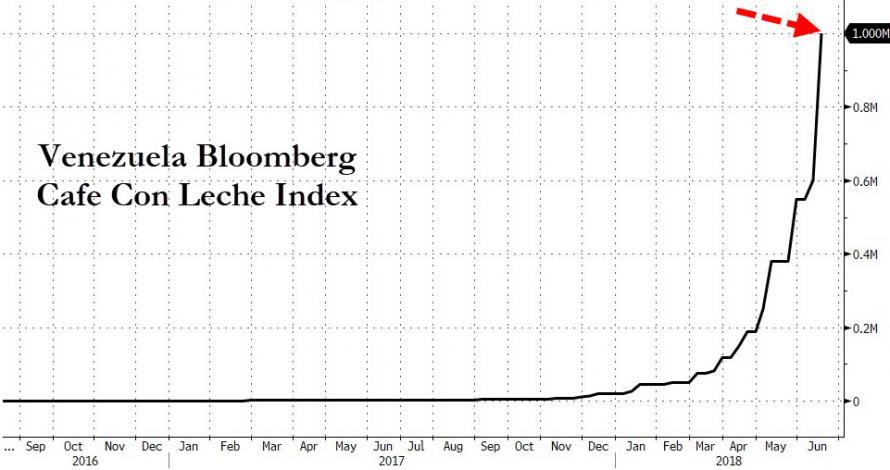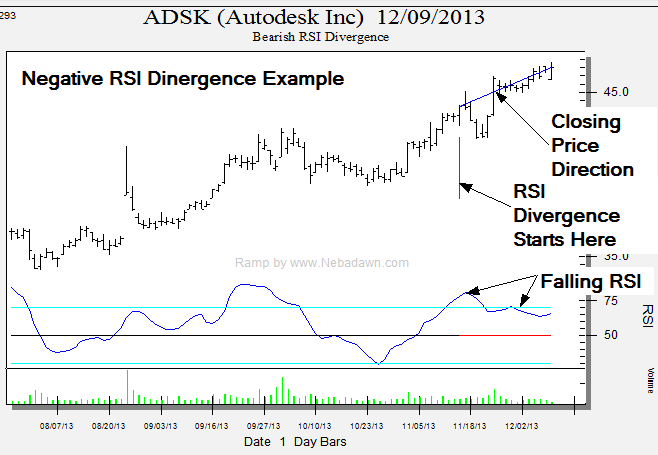Contents:


This speed, at which https://1investing.in/ moves, helps us to determine the volatility of an asset or an underlying. In simple terms, volatility can be described as ‘the speed at which price movements occur’. Welles Wilder Jr. in 1978, and it measures the volatility of an asset over a specified period. It takes into account the high, low, and close prices of the asset, and calculates the average range of price movement. The ATR is a versatile indicator that can be used for any financial instrument, including stocks, currencies, and commodities.
Financial data sourced from CMOTS Internet Technologies Pvt. Technical/Fundamental Analysis Charts & Tools provided for research purpose. Please be aware of the risk’s involved in trading & seek independent advice, if necessary.
Thus, DATR is the average true range for the last 14 days. There is a well-known adage that in order to make money in the stock markets, there must be price movement. Sometimes, the tone of the market is relatively quiet while on the other side of the spectrum, there are times when prices move at an above-average rate of speed.
A Volatility Based Momentum Indicator for Traders — Traders Magazine
A Volatility Based Momentum Indicator for Traders.
Posted: Wed, 27 Nov 2019 08:00:00 GMT [source]
The ATR indicator is a versatile tool that can help traders determine the volatility of an asset, set stop-loss levels, identify potential trading opportunities, and manage risk. By using the ATR in their trading strategy, traders can improve their decision-making process and increase their chances of success in the markets. The DATR is calculated based on daily highs and lows of the scrip, commodity or currency. Note that ATR provides a measure of volatility in absolute terms, i.e. absolute value of the change in the price of the stock over the previous close and not a percentage of the previous closing price.
Sign in to read the full article
As a result, a low priced scrip will have a lower DATR and a high priced stock will have a higher DATR. Also, ATR is not a directional indicator as in the case of RSI or MACD, but it is an indicator of interest or disinterest of the investors in a stock. Hence, strong moves in either direction lead to a higher ATR.
Bullish move with higher ATR indicates buying pressure, whereas bearish move with higher ATR indicates selling pressure. The ATR can also be used to identify potential trading opportunities. When the ATR is high, it indicates that the asset is experiencing significant price movements, which can present trading opportunities. For example, a high ATR in a currency pair may indicate that there is a lot of volatility in the market, which can present opportunities for traders to profit from the price movements. The Average True Range measures the volatility of a stock, commodity or currency typically for 14 periods. The DATR calculates the true range of the stock commodity or currency on a daily basis.
Market Movers: InterGlobe, SpiceJet fly high, Nifty PSU Bank gains 3%
We have to find out the value which suits best to our trading characteristics. The shares of the company grew by more than 4 per cent today. The company verified the record date for the dividend payment as Thursday, May 12,… Like all but one of India’s major airlines, Jet is losing money fast, beset by high costs, low fares and cut-throat competition in its domestic market. When you invest in PMS, securities are held in individual demat accounts. Kamath said ATR works better in a rangebound market, wherein the price action regresses to the mean periodically.
- A sharp decline or rise results in high Average True Range values.
- Every trading approach should be accompanied by its personalized risk management protocol.
- Bullish move with higher ATR indicates buying pressure, whereas bearish move with higher ATR indicates selling pressure.
- As ATR is a volatility based indicator in the above mentioned process we are leaving enough room for the trade to breath.
The average true range calculation is primarily based on 14 periods, which can be intraday, daily, weekly, or monthly. To measure the latest volatility, use a shorter average, such as 2 to 10 periods. The average true range, also known as ATR, is a volatility-based technical indicator introduced by J Welles Wilder in his 1974 book, titled, ‘New Concepts in Technical Trading System’.
Popular In Markets
Traders are often caught in a bind after a large move on either side. To validate the authenticity of such a move, traders can use the ATR indicator. Price Data sourced from NSE feed, price updates are near real-time, unless indicated.
Then find out if any support / resistance line/ trend line confluence with this level. As ATR is a volatility based indicator in the above mentioned process we are leaving enough room for the trade to breath. If the Average True Range is expanding, it implies increasing volatility in the market. The Average True Range is non-directional; hence, an expanding range can be an indication of either a short sale or a long buy. A sharp decline or rise results in high Average True Range values.
So, if you’re buying a stock, you might place a stop loss at a level twice the average true range, below the entry price. If you’re shorting a stock, you would place a stop loss at a level twice the average true range above the entry price. To understand the average true range, you should first understand the concept of volatility. Even though the concept is more essential in options trading, you need it pretty much everywhere. Traders cannot trade without volatility nor manage their positions and risk. The ATR can be calculated for, and applied to, any chart timeframe, such as 1-minute charts, hourly charts or weekly charts.
Using the ATR to set stop-loss levels
Many day-traders use the ATR indicator to figure out where to put their trailing stop loss. At the time of a trade, look at the current ATR indicator reading. A rule of thumb is to multiply the average true range by two to determine a reasonable stop loss point.

If the Average True Range value remains low for some time, it may indicate the possibility of a trend reversal, or continuation move and an area of consolidation for the stock. The buy signal may be valid but, since the price has already moved up significantly , betting that the price will continue to go up and expand the range even further may be a tricky decision to make. The investor may conclude that the price is more likely to fall and stay within the price range already established. While buying once the price is near the top of the daily range—and the range is well beyond average—isn’t prudent, selling orshortingis probably a good option, assuming a valid sell signal occurs. Fundamentally, the ATR indicator is a price volatility indicator, which means, it measures the volatility of the price of a stock within a period. This tool does not provide an indication of the price trend, rather, simply displays the degree of price volatility.
Do not uk banking deregulation and beyond in “Options” based on recommendations from unauthorised / unregistered investment advisors and influencers. We at Enrich Money do not provide any stock tips to our customers nor have we authorised anyone to trade on behalf of others. If you come across any individual or organisation claiming to be part of Enrich Money and providing such services, kindly intimate us immediately. The default value on the Market hunt tick is 14, which means that the system will calculate the ATR value for the last 14 days. The right client on the chart will show so many indicators you have selected the Super Trend indicator. Like any other indicator, ‘Supertrend’ works best when used with other indicators such as MACD, Parabolic SAR, RSI, etc.
It should never be used just by itself but as part of a larger trading system. Traders should look for this signal to validate trade generated by your trading system to ensure that you are not entering the market in times of extreme uncertainty. ATR is based on the true range, which uses absolute price changes and is not comparable between stocks. Low-priced stocks would have lower ATR compared with high-priced stocks. Traders can make use of this indicator by reviewing entry or exit points. If you want to modify Buying and selling signal, you have to change the multiplier to 2.1, the best trading strategy.
On the other hand, during periods of sustained sideways movement, volatility is often low. Stock brokers can accept securities as margins from clients only by way of pledge in the depository system w.e.f September 01, 2020. Update your e-mail and phone number with your stock broker / depository participant and receive OTP directly from depository on your e-mail and/or mobile number to create pledge. And then default setting Box will be open, multiplier 1.7, commonly used by many people, with Periods of 14 days. If formed then we can say market is exhausted and trend can reverse. The answer is smaller the multiple we ride shorter trend and greater the multiple we ride bigger trend.
A stop-loss order is an order to sell a security when it reaches a certain price, and it is used to limit losses in case the price moves against the trader’s position. The ATR can be used to set the stop-loss level based on the volatility of the asset. DATR stands for Daily Average True Range and it provides a measure of the volatility of a stock, commodity or currency on a daily basis. A trailing stop loss is a way to exit a trade if the asset price moves against your expectation, but it also enables you to move the exit point if the price is moving in your favour.
When the ATR is falling, it is an indication that the volatility of the security is descending; however, when ATR shoots up, it is an indication that volatility is surging. The Average True Range – an indicator of price volatility – is used for entry or stop prompts. The Average True Range stop adjusts to consolidation areas or sharp price movements, triggering the unusual movement of prices in both upward and downward directions. The multiple of Average True Range, for example, 1.5 x Average True Range value, can be used to track the abnormal price movements. Average True Range is not necessarily a trade signal, although it can be used to assist and confirm entry points. The value returned by the Average True Range is merely an indication as to simply how much a stock has moved either up or down on an average over the defined period.

ATR Indicator is the most important indicator in our demand supply trading learning series. In this article we shall learn What is ATR Indicator and how to use it to trail stop loss. J. Welles Wilder, Jr. created the Average True Range and featured it in his bookNew Concepts in Technical Trading Systems. The ATR indicator also helps to figure out the average size of the daily trading range.
That being said, it is an indicator that is best used as a complement to more price direction-driven indicators. Once a price move has begun, the Average True Range can add a level of confidence in that move, which can be beneficial for a trader. Typically, the average true range is an n-period-smoothed moving average of the true range values.
Technical Analysis: Deciding trailing exit levels using ATR technical indicator — Moneycontrol
Technical Analysis: Deciding trailing exit levels using ATR technical indicator.
Posted: Sat, 30 Mar 2019 07:00:00 GMT [source]
We can notice the price Buy and selling level will be changed according to ATR valuation. Every trading approach should be accompanied by its personalized risk management protocol. “The difference between each equation is considered as a range and the true range is the maximum value of the three equations. A ‘Supertrend’ also acts as strong support or resistance, and it also provides a trailing stop loss for the existing trade.
Using Average True Range (ATR) to Measure Volatility in Financial … — DailyFX
Using Average True Range (ATR) to Measure Volatility in Financial ….
Posted: Wed, 01 Jun 2022 07:00:00 GMT [source]
The measurement of the average true range is 14-period based. For example, a new Average True Range is calculated every day on a daily chart and every minute on a one-minute chart. When plotted, the readings from a continuous line shows the change in volatility over time. Day traders can use statistics on how much an asset usually moves in a certain period for plotting profit targets and determining whether or not to strive for a trade.